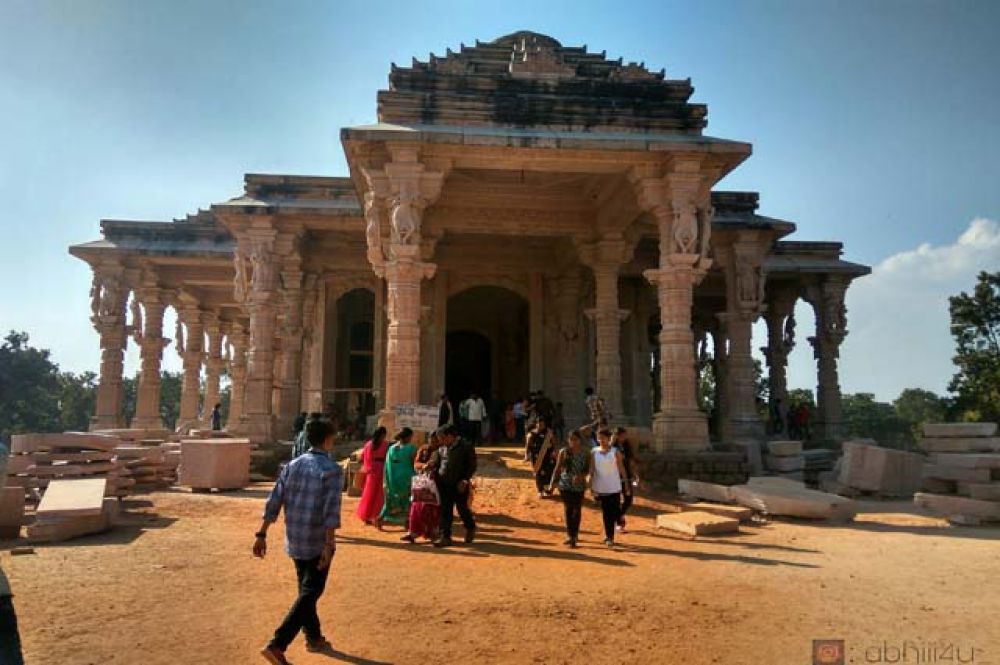

Tucked away in the serene environs of Amarkantak in Madhya Pradesh, India, the Shri Sarvodaya Digamber Jain Temple serves as a beacon of tranquility and spiritual upliftment. The temple, dedicated to Lord Adinath (Rishabhanatha), the first Tirthankara of the Jains, is an important pilgrimage destination for followers of Jainism as well as a point of interest for tourists from diverse backgrounds.
The history of Jainism in Amarkantak is deeply rooted, with the region being home to numerous ancient Jain temples that date back many centuries. The Shri Sarvodaya Digamber Jain Temple, however, is a relatively recent addition to this sacred geography. The temple was envisioned as a grand edifice embracing the principles of Jainism and was meticulously designed to reflect the architectural brilliance of Jain temple craft.
The temple's presiding deity, Lord Adinath's idol, is a majestic structure carved out of a single stone and is a significant draw for pilgrims from all over the world. The establishment of this temple has not only contributed to the religious and cultural fabric of Amarkantak but also bolstered the region's importance as a center of pilgrimage in Jainism.
The inauguration of the Shri Sarvodaya Digamber Jain Temple marked a new epoch in the tourism history of Amarkantak. The temple complex, with its peaceful environment and spiritual aura, has seen a steady increase in visitor footfall. As pilgrimage tourism grows in India, the temple has become one of the essential destinations for those seeking spiritual solace and exploration of Jain heritage.
Amarkantak's pilgrimage tourism has been augmented by the addition of this temple, which has led to improved infrastructure and facilities for tourists. With the rise of eco-spiritual and cultural tourism trends, Amarkantak is gaining prominence not just as a pilgrimage site but also as a retreat for nature lovers and heritage enthusiasts.
Recently, there has been a growing trend towards responsible tourism, where visitors are increasingly conscious of the environmental and cultural impact of their travels. Tourists visiting Shri Sarvodaya Digamber Jain Temple are often keen to experience sustainable tourism offerings, which include staying at eco-friendly accommodations, participating in local cultural practices, and contributing to the conservation of the region's natural and historical sites.
Another trend is the digitization of pilgrimage tourism. Many tourist destinations, including Amarkantak and the Shri Sarvodaya Digamber Jain Temple, are harnessing technology to provide virtual tours, online pooja services, and digital information platforms, thereby making the pilgrimage experience more accessible to devotees across the world.
Visitors to the temple can engage in various religious activities, attend spiritual discourses, and marvel at the ornate carvings depicting scenes from Jain mythology. Additionally, the temple's location in Amarkantak, near the origin of the holy river Narmada, adds to the sacred experience for pilgrims and tourists alike.
Travelers are encouraged to respect the sanctity of the site by dressing modestly and adhering to the cultural norms of the temple. Moreover, the ideal time to visit Shri Sarvodaya Digamber Jain Temple is during the cooler months of October to March, when the weather is pleasant, facilitating a more comfortable pilgrimage and tourist experience.
In summary, the Shri Sarvodaya Digamber Jain Temple is not only a testament to the profound spiritual heritage of Jainism but also a shining example of how religious tourism can intertwine with cultural and environmental conservation, propelling Amarkantak towards a new era of responsible and inclusive tourism.